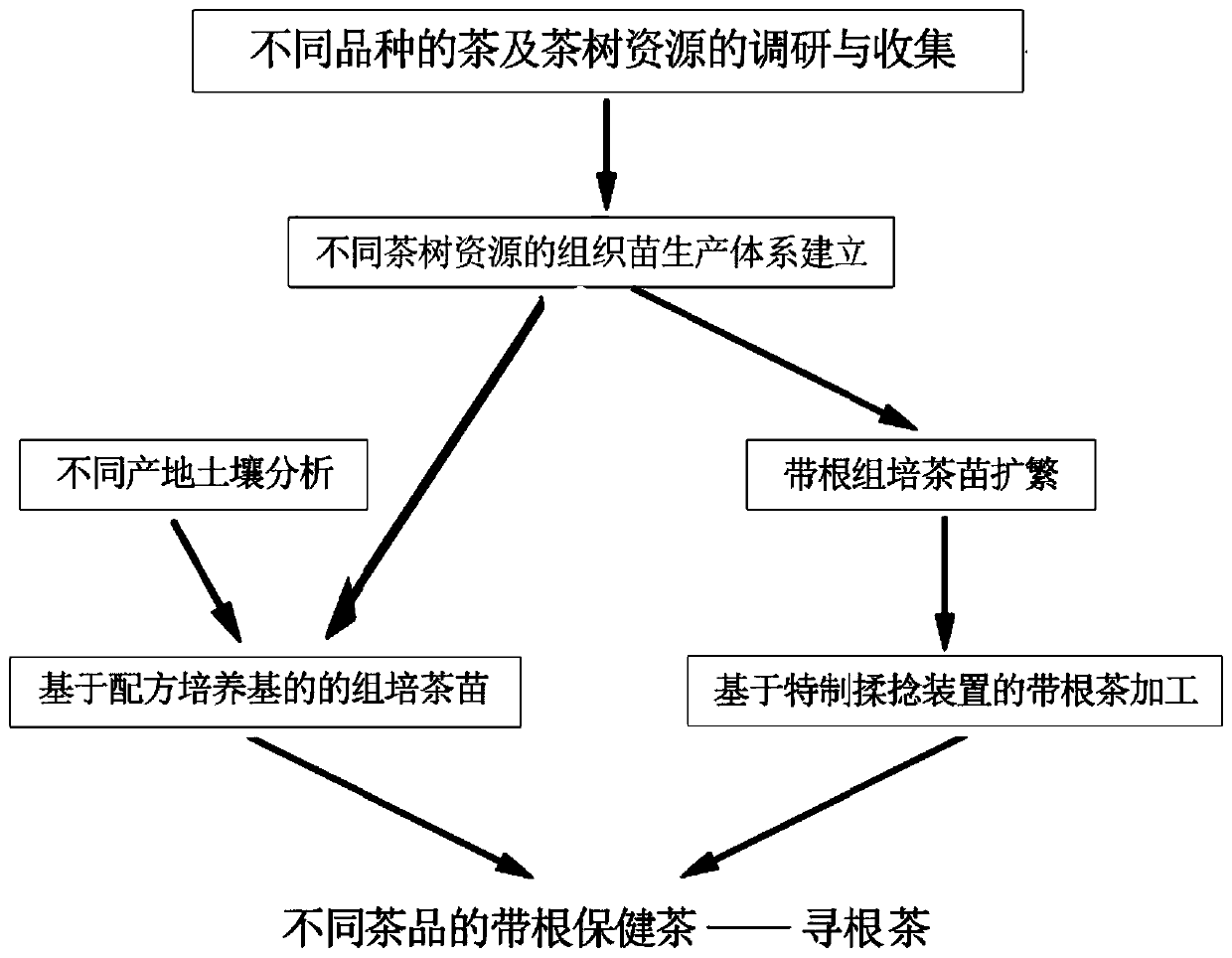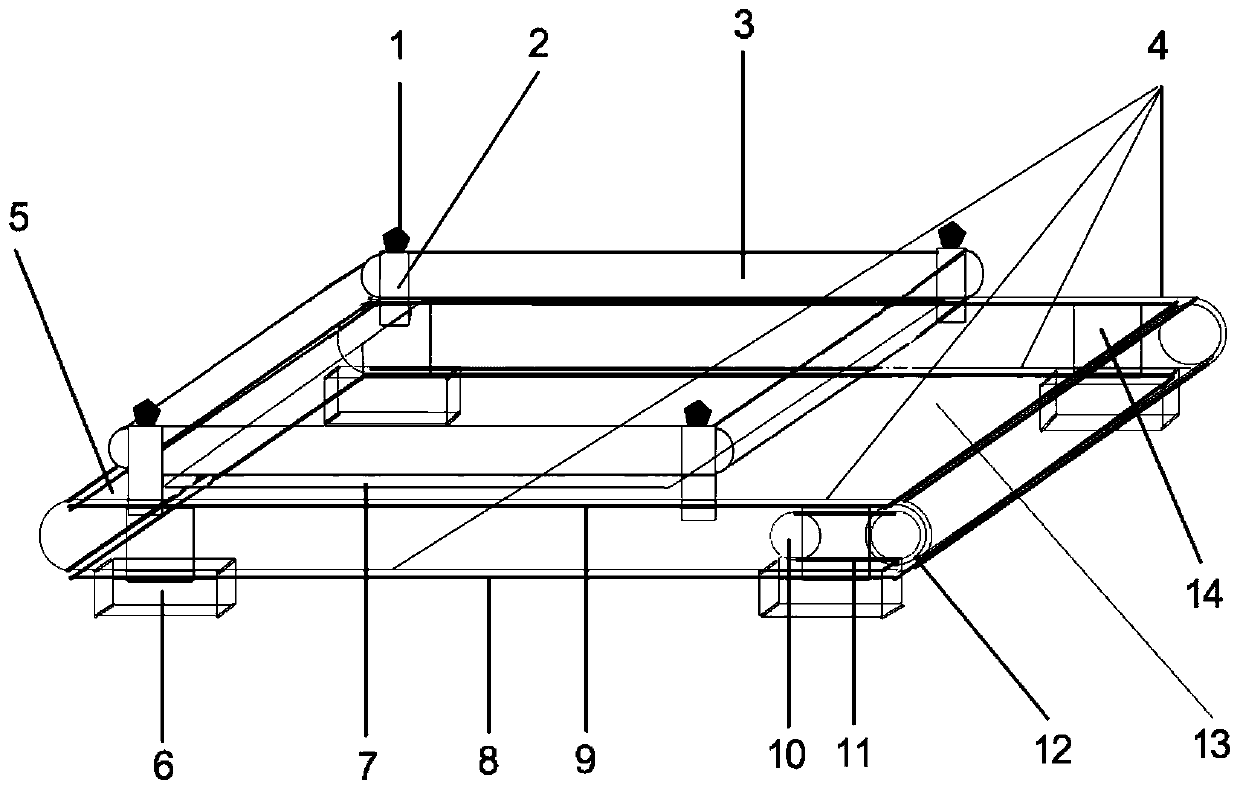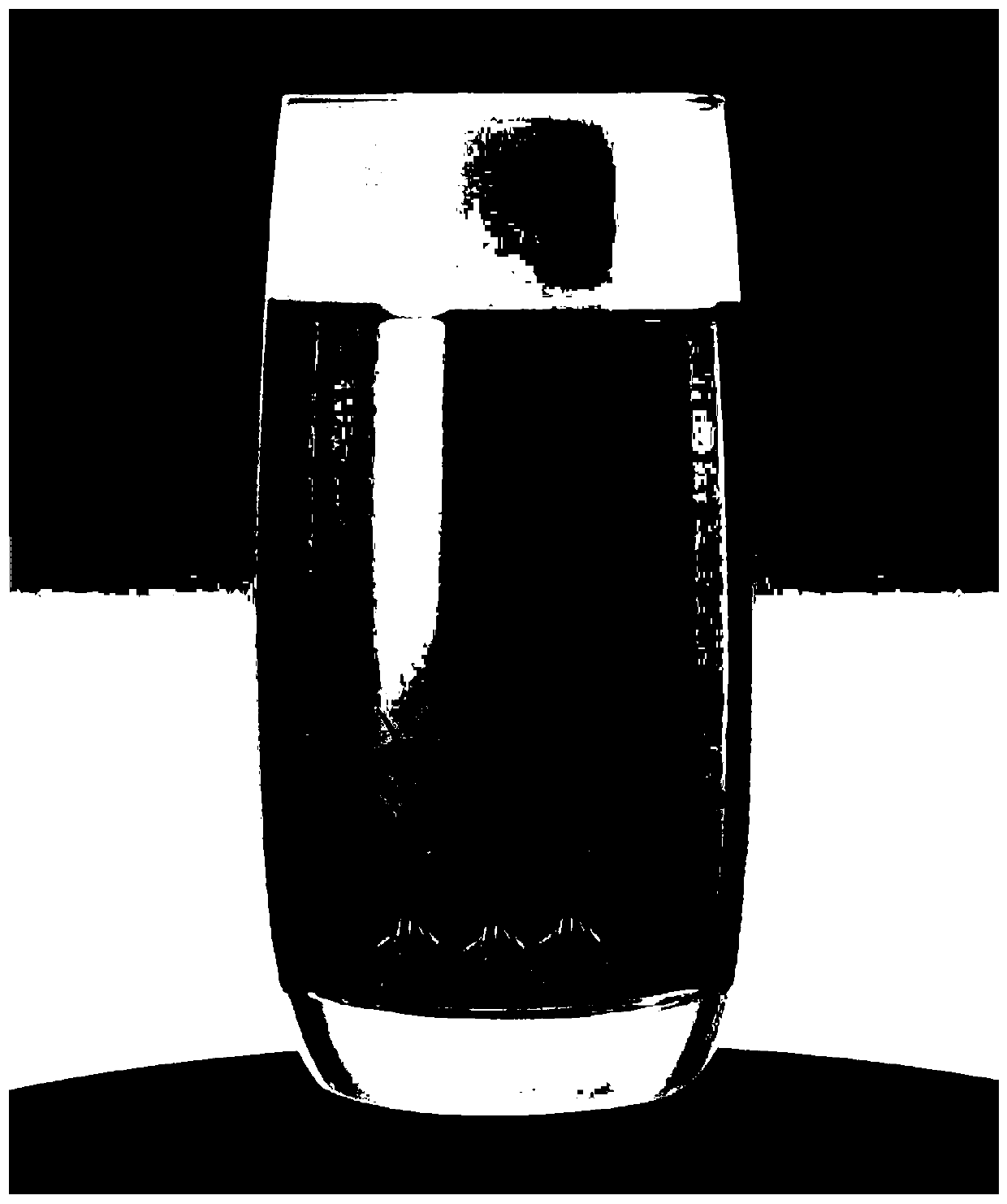Method for tissue culture of Xungen tea, making method and rolling device
A technology of tissue culture and rolling device, which is applied in horticultural methods, botanical equipment and methods, tea treatment before extraction, etc. It can solve the problems of tea filtering, pouring and cleaning complex, so as to achieve ornamental value, improve quality and ensure yield Effect
- Summary
- Abstract
- Description
- Claims
- Application Information
AI Technical Summary
Problems solved by technology
Method used
Image
Examples
Embodiment 1
[0032] Embodiment 1: a kind of method for root-seeking tea tissue culture, comprising:
[0033]S1, select the green tender stem tip of the original tea tree plant, the length is 1-10cm; the original tea tree resources include all species and varieties of Camellia plants that can be used for drinking tea production, specifically include the following strains: Wubao tea series: Guangxi tea, Dabao tea, Guangnan tea, Wushi tea, and sparse tooth tea. Five-column tea series: Thick shaft tea, five-column tea, old black tea, Dali tea, Burmese tea, Yuanji tea, wrinkled leaf tea, Maguan tea, Hani tea, multi-petal tea. Tufang tea series: Mengla tea, Dehong tea, Tuli tea, quasi-xie tea, false Tufang tea, Rongjiang tea, purple fruit tea, Duomai tea. Tea series: tea, bitter tea (variety), white hair tea (variety), Pu'er tea, multi-calyx tea, quasi-fine-calyx tea, Yuanjiang tea, high tree tea. And group species: Mengku big-leaf tea, Menghai big-leaf tea, Fengqing big-leaf tea (the above ar...
no. 1 example
[0048] The first example: In March 2019, 56 green young stem tips were collected from the individual tea garden in Laoshan, Qingdao, the most northern tea garden in my country, with a length of 1-10cm (such as 1cm, 2cm, 3.5cm, 10cm, etc.), First, rinse with running water for 1 hour on a sterile workbench. Under aseptic conditions, they were sterilized with 75% alcohol for 30 seconds, 0.1% mercuric chloride for 6 minutes, and rinsed with sterile water for 5 times. Then be divided into 1.0-1.5cm (as 1.0cm, 1.1cm, 1.5cm etc.) banded stem segment or shoot tip, inoculate in MS+6-BA2.0mg / L+NAA0.1mg / L medium, 30 days to obtain sterile in vitro shoots.
[0049] Further, the aseptic in vitro shoots are cut into 1.0-1.5cm (such as 1.0cm, 1.1cm, 1.5cm, etc.) shoot tip or segmented stem section, and transferred to medium MS+6-BA3 .0mg / L+IBA0.1mg / L for proliferation culture. On day 15, isolated clustered buds (average 3.2 buds each) were obtained. Then, the clustered buds were separated...
no. 2 example
[0057] The second example: the production of Biluochun root-seeking in Yixing, Jiangsu
[0058] In March 2019, 100 green young stem tips were collected from individual tea gardens in Yixing, Jiangsu, with a length of 1-6cm. After collection, they were delivered to the laboratory in a fresh mode by SF Express.
[0059] The primary culture was first washed with running water on a sterile bench for 2 hours, then sterilized with 75% alcohol for 60 seconds, 0.1% mercury liter for 15 minutes, and rinsed with sterile water for 10 times under aseptic conditions. Then it is divided into 0.5.0-1.2cm (such as 0.5cm, 1.0cm, 1.1cm, 1.2cm, etc.) with jointed stem segments or shoot tips, inoculated in MS+6-BA3.0mg / L+NAA0.1mg / In L medium, sterile in vitro shoots were obtained in 15 days.
[0060] Further, the aseptic isolated shoots are cut into shoot tips or sectioned stems with a length of 0.5-1.2cm (such as 0.5cm, 1.0cm, 1.1cm, 1.2cm, etc.), and transferred to the medium MS+ Proliferati...
PUM
 Login to View More
Login to View More Abstract
Description
Claims
Application Information
 Login to View More
Login to View More - R&D
- Intellectual Property
- Life Sciences
- Materials
- Tech Scout
- Unparalleled Data Quality
- Higher Quality Content
- 60% Fewer Hallucinations
Browse by: Latest US Patents, China's latest patents, Technical Efficacy Thesaurus, Application Domain, Technology Topic, Popular Technical Reports.
© 2025 PatSnap. All rights reserved.Legal|Privacy policy|Modern Slavery Act Transparency Statement|Sitemap|About US| Contact US: help@patsnap.com



